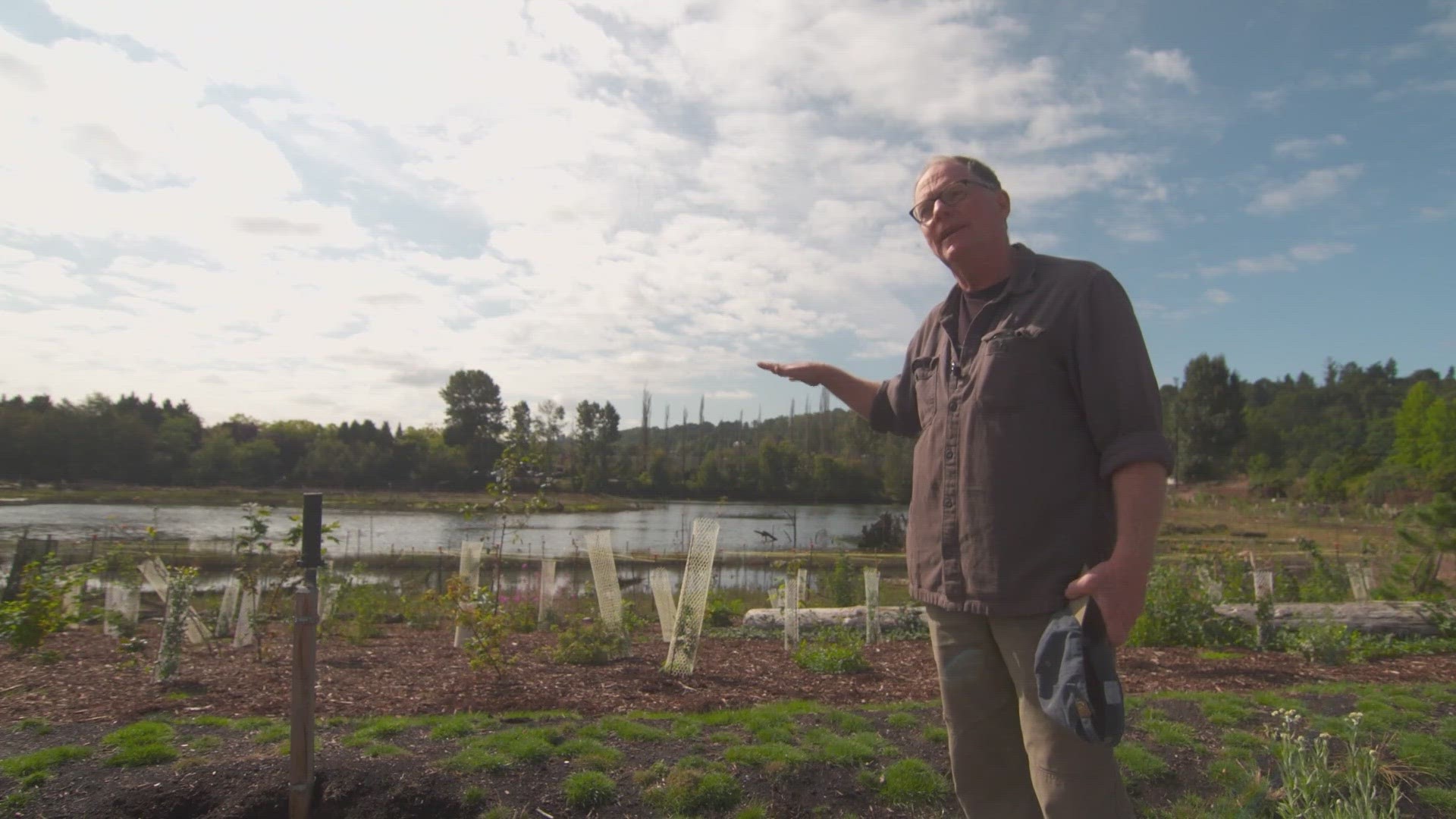TUKWILA, Wash. — The King County Department of Natural Resources and Parks' (DNRP) Chinook Wind Mitigation Project in Tukwila stands as an example of how formerly developed land can be just not restored, but re-created -- in this case, as a way to give juvenile salmon space to rest and grow.
Laird O'Rollins is a senior ecologist with King County Water and Land Resources. He's worked for the county for 34 years and has been on this project since it started. In 2015, land near Tukwila International Boulevard housed an abandoned hotel and had asbestos and other hazardous materials on site. King County purchased the property and hired a contractor to remove contamination and buildings before construction on what would soon serve as a safe lagoon for salmon could begin.
The location was ideal for helping small juvenile salmon rest and grow while transitioning from freshwater to saltwater.
"The fish that aren't big enough, less than two-and-a-half-inches, don't make it," O'Rollins said. "When they hit the saltwater, they're not ready, and for whatever reason, we're not sure all the reasons, but they don't make it back to spawn. We need these fish to stay in the river for a little longer so they can grow a little bigger before they hit the salt water, and that's what this is for."
Crews dug out around 8,000 dump trucks worth of dirt, planted trees and other wetland and stream-side vegetation and crafted a habitat where bugs would serve as food for fish.
"This is a place for them to get out of the main stem river and find some shelter, some cover, some bugs and stay here a couple of extra weeks so they can get bigger, go to saltwater, come back and create more salmon," O'Rollins said. "What they want is really low-angled, vegetated banks, which there's not many of on the Green River."
King County DNRP says the project was funded through mitigation fees. The fund comes from projects ranging from small single-family homes all the way up to warehouses and infrastructure projects; in this case, much of the money came from Sound Transit.
King County Mitigation Reserves Program Manager Megan Webb says the county's mitigation program is a way for developers with unavoidable impacts to wetlands and other aquatic resources to pay a fee to King County instead of doing their own offset projects.
"These are unavoidable impacts- we are able to take those [fees] and combine them together, to do larger, more impactful projects like this one," Webb said. "King County has fishery biologists, we have ecologists, we have engineers, we have all kinds of in-house folks who are experts and will design our sites to not only offset impacts but provide the important salmon habitat."
Webb says having readily available funding also accelerates the ability to do projects like this one.
"We always are striving to do the best thing we can in a particular location- and this location is super unique, it's super important for salmon habitat, it's a place for juvenile Chinook to rest as they're moving from freshwater to the saltwater of Puget Sound," Webb said. "And to use mitigation funding we were able to use it more quickly. We had the funding available to be able to get a big lift on the landscape in an urban environment."
O'Rollins says fish have already been spotted in the lagoon. Chinook, Coho, steelhead and pink salmon are among the species expected to swim through. Over time trees will grow to create more shade and the ecosystem will develop further, but for now, O'Rollins says he's thrilled to see progress.
"It's really neat to see an effect to the landscape, especially when you've been thinking about it and planning for years and years," O'Rollins said. "It's really gratifying to see it used, look like you meant it to look."
King County says 97% of the estuarine wetland habitat in the Duwamish River has been lost in the last 150 years, with most land along the river expensive and rarely available to buy.
"The Chinook Wind site represented a rare opportunity to acquire, restore, and permanently protect a large area in the transition zone, where fresh and saltwater mix," the county wrote in a release. "The project will create a significant and valuable off-channel habitat where juvenile salmon can reside while adjusting from fresh water to salt water as they feed and grow."

